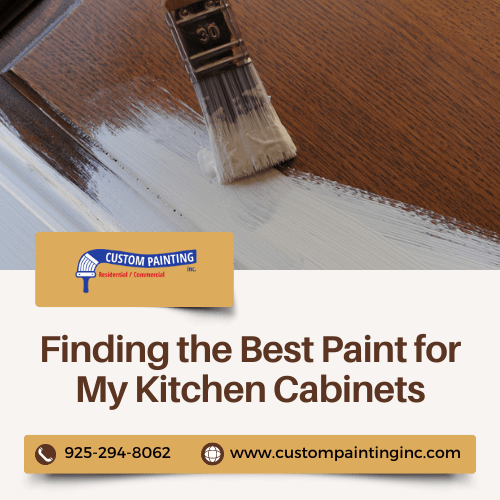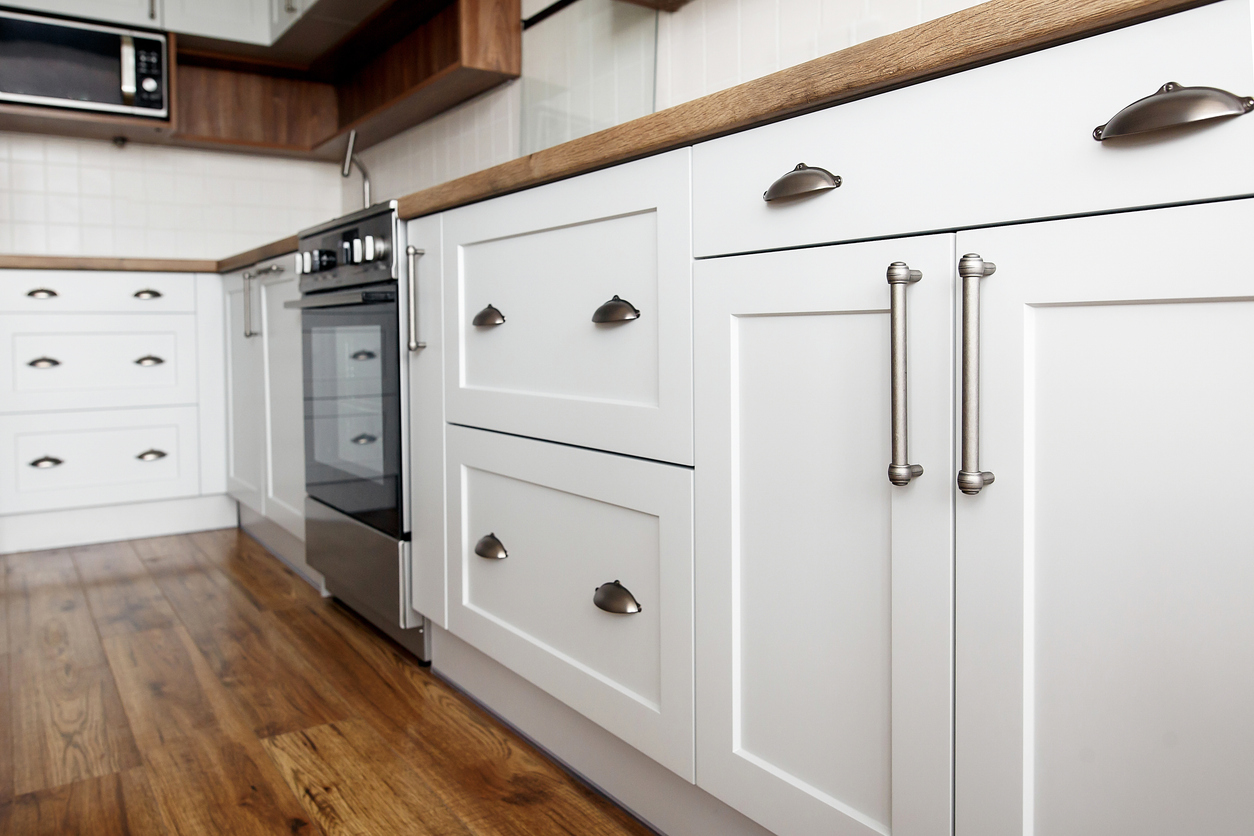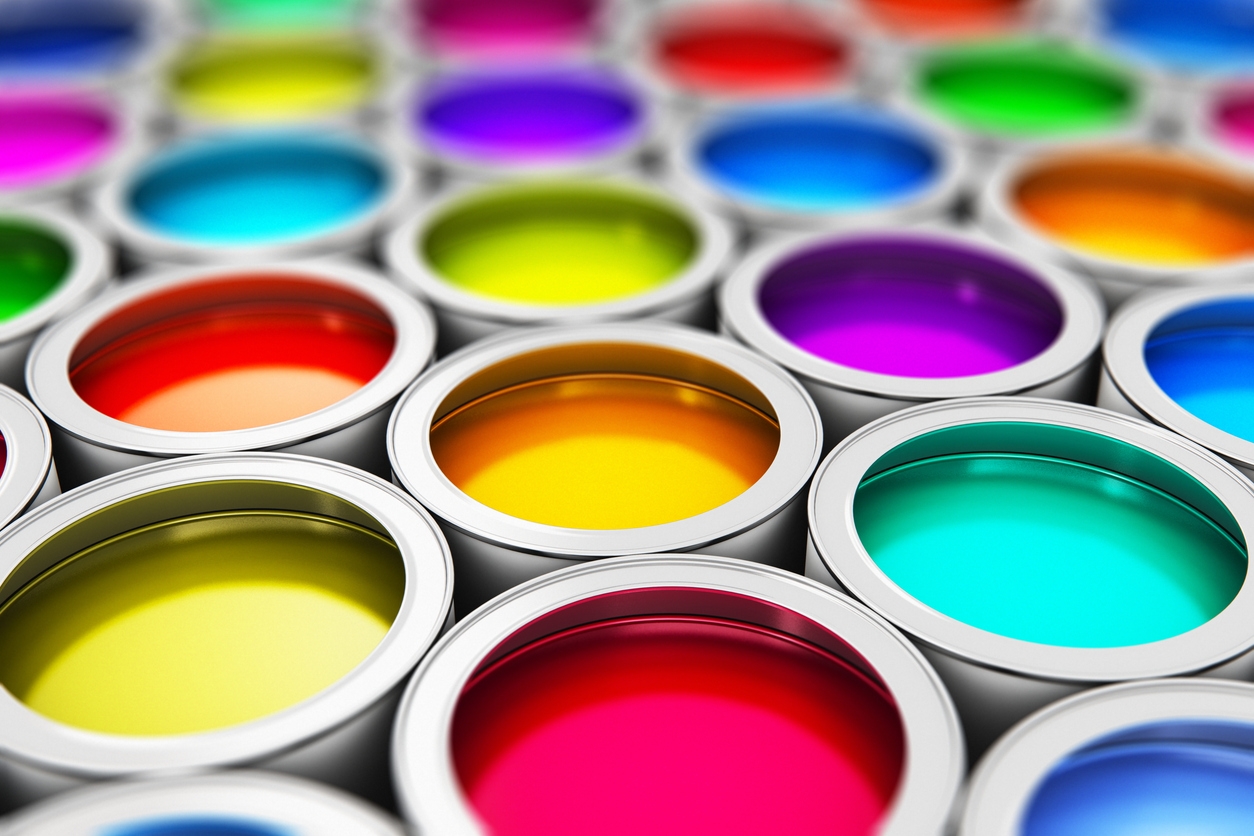Never underestimate what paint can do to your living spaces, such as the kitchen. You can forego a complete kitchen remodel by repainting kitchen cabinets. Since cabinets are the cornerstone of a kitchen’s functionality and overall appearance, repainting them alone can dramatically change your kitchen’s look and feel.
For the best results, don’t forget to prep your cabinets. Cleaning, repairing flaws, sanding, and priming will leave your kitchen cabinets with surfaces optimal for painting. It’s natural to wonder, “What’s the best paint for my kitchen cabinets?” Therefore, determine the paint type that will not only look good but will also work best in a splatter-prone, high-traffic kitchen. It’s always better to navigate the paint store with the help of a professional.
Reasons to Paint Kitchen Cabinets
There are many fantastic reasons to transform your tired-looking kitchen cabinets into cabinets that seem brand-new. Repainting them will make a huge difference and transform your kitchen from drab to fab.
- Cost-effective upgrade: Painting is much less expensive than replacing cabinets entirely. It allows you to give your kitchen a new look without the high costs of new cabinetry.
- Aesthetic improvement: If your cabinets are outdated or you want a change in color or style, painting can provide a fresh, modern look. It allows you to customize the color to match your kitchen’s decor.
- Increased home value: A kitchen facelift can increase your Dublin, CA area home’s value. Well-painted cabinets can make the kitchen look more appealing to potential buyers.
- Quick and relatively easy: Painting cabinets is faster than a complete kitchen renovation. You can complete this project even on a weekend as it doesn’t require major construction work.
- Repair and refresh: Over time, cabinets can become worn or damaged. Painting can cover up minor imperfections and wear, making them look new again.
- Personalization: Painting allows you to express your unique style and preferences. You can choose from various colors and finishes to create a kitchen that reflects your taste.
- Sustainability: Painting old cabinets is a more sustainable option than discarding them. It reduces waste and is environmentally friendly.
- Protection: A good-quality paint job can protect the cabinet surfaces from moisture, grease, and other kitchen-related wear and tear.
- DIY-friendly: Painting cabinets is a project that many homeowners can tackle themselves, making it a satisfying DIY project that can save money on labor costs.
What Should be the Best Paint for Kitchen Cabinets?
Choose satin, semi-gloss, or glossy paints for kitchen cabinets due to their durability against moisture, dirt, and oils. Glossy paints offer a sleek look but are trickier to apply than flat or matte options, requiring precise techniques and quality tools for best results.
When selecting paint for kitchen cabinets, it’s important to consider durability, ease of application, and a smooth finish. We recommend the following paints for your kitchen cabinets:
1. Benjamin Moore Advance
It is a premium-quality, water-borne alkyd paint known for its durability and smooth finish, perfect for trim, doors, and cabinetry. It has low VOC properties and thus doesn’t emit fumes, making this paint ideal for interior painting projects. With its exceptional flow and self-leveling properties, you don’t have to worry about ugly brush marks and instead leave your walls with a smooth finish.
2. Sherwin-Williams ProClassic Interior Water-based Acrylic-Alkyd
Sherwin-Williams ProClassic Interior Water-based Acrylic-Alkyd provides a durable coating, making it ideal for doors, trim, cabinetry, railings, and furniture. It has excellent adhesion, flow, and leveling, leaving the surfaces with a smooth finish. It is also easy to clean and resists yellowing.
3. Rust-Oleum Cabinet Transformations Kit
Rust-Oleum’s all-in-one paint kit is perfect for refinishing cabinets. This affordable and easy-to-use kit requires no stripping, sanding, or priming, thus delivering professional-looking results to your cabinets in no time. The Rust-Oleum Cabinet Transformations Kit offers superior resistance to moisture, scratches, and stains, making it ideal for high-traffic areas such as kitchens.
4. Farrow & Ball Modern Eggshell
Farrow & Ball Modern Eggshell is an environmentally friendly, low-VOC paint offering excellent resistance to moisture, stains, and scuffs. This paint is packed with pigments, giving your cabinets a deep and rich color. It also has anti-yellowing properties for a long-lasting finish.
5. Valspar Cabinet Enamel Semi-Gloss Latex Interior Paint
Valspar Cabinet Enamel Semi-Gloss Latex Interior Paint is specifically designed for cabinets and trim. It dries to a smooth, factory-like finish that stands up to daily use. This durable paint is also easy to clean.
6. Behr Alkyd Semi-Gloss Enamel
Behr Alkyd Semi-Gloss Enamel has traditional alkyd (oil-based) paint’s performance with water-based paint’s convenience and ease of use. It is resistant to moisture, stains, scuffs, and marks. This durable paint is also easy to apply and clean.
7. INSL-X Cabinet Coat
INSL-X Cabinet Coat provides the ultimate finish for refurbishing worn and outdated cabinets, shelves, furniture, trim, and other interior surfaces. This paint requires little prep work, and its self-leveling properties leave the surfaces with minimal brush marks. When dried, the paint gives off a smooth and satin-like finish.
8. Dunn-Edwards Aristoshield
The Aristoshield from Dunn-Edwards is an ultra-premium enamel formulated with water-based urethane alkyd for an oil-like finish. You can use this paint for interior or exterior paint projects. This highly durable paint has an excellent flow and leveling for a smooth finish. It’s very low on VOC, too.
9. Diamond Brite Paint 3000
Diamond Brite Paint 3000 is an oil-based enamel with a durable and long-lasting finish, making it suitable for high-traffic areas like kitchens. It also offers excellent adhesion and resistance to moisture.
10. Sherwin-Williams Emerald Urethane Trim Enamel
Sherwin-Williams Emerald Urethane Trim Enamel is an excellent water-based enamel with a durable finish. It requires only a few coats, resists yellowing, and stands up to daily wear and tear. You can use this paint for interior and exterior paint projects.
Conclusion
Manufacturers continue to improve their paint formulations that provide high-quality, durable, and beautiful finish for high-traffic areas, such as kitchen cabinets.
But if application is your main concern, contact the pros from Custom Painting, Inc., and they will deliver a flawless finish for your kitchen cabinets. Transform your kitchen today with the help of our paint experts! Call us at 925-866-9610 or message us on our contact page for a free consultation!



